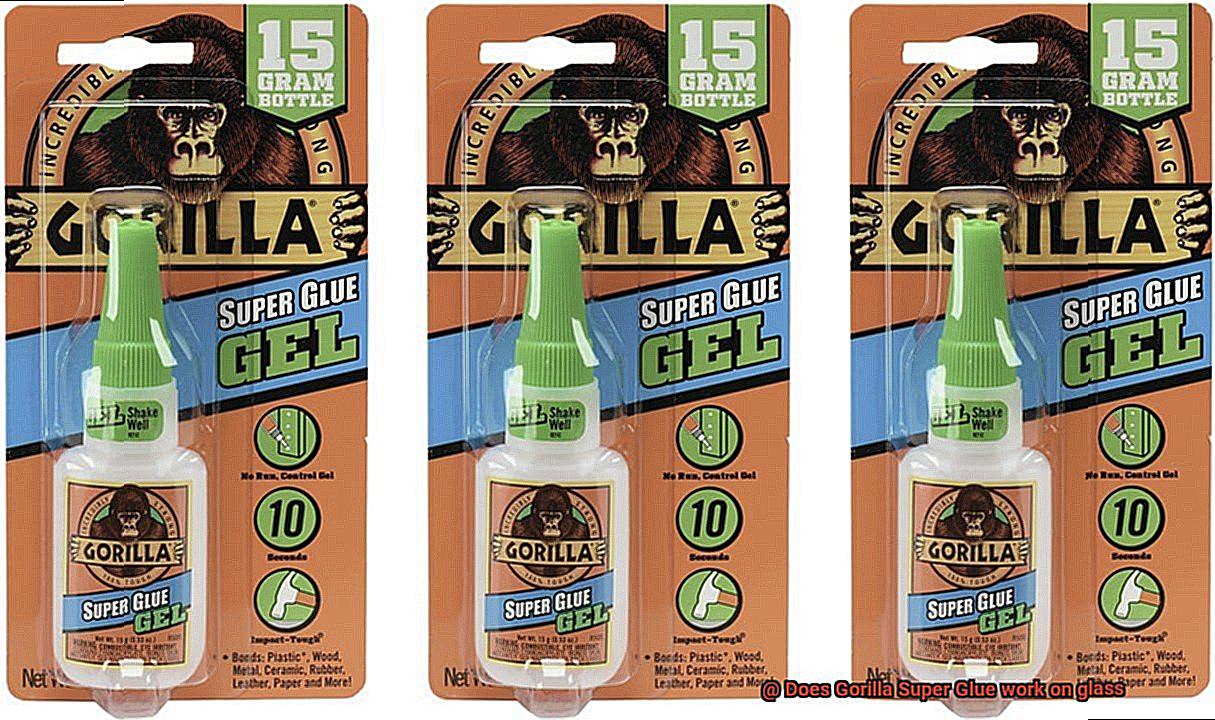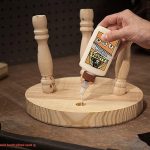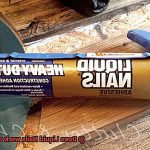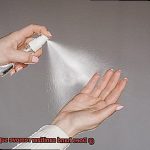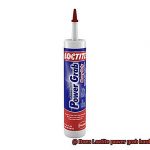Ready to tackle that glass repair project but not sure if Gorilla Super Glue is up to the task? Well, fear not. We’re here to spill the beans on whether this mighty adhesive can conquer the slippery surface of glass. Get ready as we dive into the world of bonding, uncovering the secrets behind Gorilla Super Glue’s effectiveness on glass.
Glass can be a tricky customer when it comes to finding the right glue. Its smooth and nonporous surface demands an adhesive that can truly stick like no other. Enter Gorilla Super Glue – known for its strength and versatility. But does it live up to its reputation on glass?
Join us as we explore the science behind adhesion and discover whether Gorilla Super Glue has what it takes to bond with glass. We’ll dish out some handy tips and techniques along the way, so whether you’re fixing a delicate glass ornament or creating a masterpiece, you’ll be armed with all the knowledge you need.
So, whether you’re a DIY fanatic, an artistic soul, or simply someone trying to fix a treasured glass item, this blog post is your ultimate guide to conquering Gorilla Super Glue’s interaction with glass. Let’s embark on this adhesive adventure together and unlock the secrets of bonding glass like a pro.
Can Gorilla Super Glue Bond Glass Surfaces?
Contents
- 1 Can Gorilla Super Glue Bond Glass Surfaces?
- 2 Preparing the Glass Surface for Bonding
- 3 Applying Gorilla Super Glue to the Glass Surface
- 4 Creating a Strong Bond with Gorilla Super Glue
- 5 Allowing Sufficient Curing Time for the Glue to Set
- 6 Different Variants of Gorilla Super Glue
- 6.1 Gorilla Super Glue Gel: The Perfect Consistency and Impact Resistance
- 6.2 Gorilla Super Glue with Brush and Nozzle Applicator: Versatility at Your Fingertips
- 6.3 Gorilla Super Glue Micro Precise: Ultra-Thin Formula for Delicate Surfaces
- 6.4 Achieving Optimal Bonding on Glass
- 6.5 Drying Time: Patience is a Virtue
- 6.6 Water Resistance and Alternative Options
- 7 Limitations of Bonding Glass with Gorilla Super Glue
- 8 Alternatives to Using Gorilla Super Glue on Glass Surfaces
- 9 Conclusion
When it comes to bonding glass surfaces, finding the right adhesive can be a daunting task. Glass’s smooth and non-porous nature presents a unique challenge that many adhesives struggle to overcome. However, fear not. Gorilla Super Glue is here to save the day. With its specially formulated strength, this adhesive has the potential to conquer glass surfaces like no other. In this article, we will explore the effectiveness of Gorilla Super Glue on glass surfaces and provide you with expert tips to achieve an unbreakable bond.
Understanding the Factors at Play:
To fully comprehend the magic behind Gorilla Super Glue’s glass-bonding prowess, let’s dive into the factors that come into play:
- Type of Glass: From tempered to frosted, each type of glass possesses unique surface properties that impact adhesion. Before embarking on your bonding journey, it’s advisable to conduct a small-scale test on an inconspicuous area to ensure compatibility.
- Surface Preparation: The key to a successful bond lies in preparing the glass surface like a master craftsman. Remove any trace of dust, dirt, or oils using isopropyl alcohol or a suitable glass cleaner to create a pristine canvas for adhesion.
Application Techniques for Success:
To unleash Gorilla Super Glue’s full potential on glass surfaces, follow these tried-and-true application techniques:
- Apply Sparingly: Like an artist delicately applying brushstrokes, use a small amount of Gorilla Super Glue on one of the surfaces to be bonded. Remember, less is more. Overapplication may lead to messy appearances or weaken the bond.
- Firm Pressure: As you bring the two surfaces together, exert firm pressure for several seconds. This act of unity creates an unyielding bond. Avoid any temptation to move or reposition the pieces during this critical time.
- Curing Time: Patience is a virtue when it comes to bonding glass. Allow ample curing time for the glue to set fully. While 24 hours is the typical timeframe, factors like temperature and humidity may influence the drying process.
Considerations and Limitations:
While Gorilla Super Glue possesses extraordinary bonding capabilities, it’s essential to acknowledge its limitations:
- Bond Strength: The bond strength on glass surfaces might not reach the same level as that achieved with materials like wood or metal. Handle any bonded glass objects with tender care, as they can be fragile and prone to break under stress.
- Specialized Needs: If you require a more flexible bond or need to fill gaps in the glass surface, consider exploring specialized glass adhesives or epoxy alternatives. These options cater specifically to the demands of glass bonding.
Conclusion:
Preparing the Glass Surface for Bonding
Look no further than Gorilla Super Glue, a powerful adhesive that can handle even the toughest glass bonding projects. In this comprehensive guide, we will walk you through the necessary steps to prepare your glass surface for bonding with Gorilla Super Glue. By following these steps, you can ensure a strong and durable bond that will stand the test of time.
Step 1: Clean, Clean, Clean.
To achieve a successful bond, cleanliness is key. Before applying any adhesive, thoroughly clean the glass surface to remove any dirt, dust, or oils that can hinder the adhesive’s effectiveness. Grab a mild detergent or glass cleaner and a clean cloth to wipe away any contaminants. And remember, make sure the surface is completely dry before moving on.
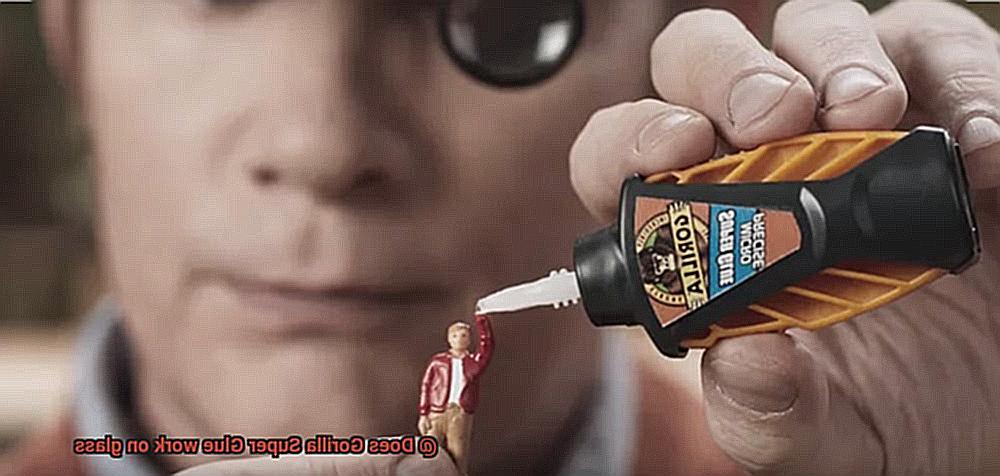
Step 2: Roughen the Surface
For an even stronger bond, consider lightly sanding the area where the glue will be applied. This step creates a slightly rough texture that gives the adhesive more surface area to grab onto. Use a fine-grit sandpaper and gently sand in a circular motion until you achieve the desired level of roughness.
Step 3: Dust Off Debris
After sanding, don’t forget to eliminate any dust or debris created during the process. Carefully remove any loose particles from the glass surface using a clean cloth or compressed air.

Step 4: Primer Power
In some cases, especially when bonding larger or heavier objects, using a primer may be necessary. Primers are specially formulated to enhance adhesion between materials like glass and adhesives. Follow the manufacturer’s instructions closely when using a primer and ensure it dries completely before proceeding with the glue application.
Step 5: Compatibility Check
Although Gorilla Super Glue is designed to work on various surfaces, it’s always wise to test a small inconspicuous area first, especially if you’re unsure about the compatibility with a specific type of glass. This simple step will help you avoid any surprises and guarantee that the adhesive works effectively.
Step 6: Less is More
When applying Gorilla Super Glue on glass, remember that a little goes a long way. Apply a thin, even layer of glue to one of the surfaces you are bonding, and then firmly press the two surfaces together. Hold them in place for a few moments to allow the glue to set and create a strong bond.
Step 7: Clear as Day
Don’t worry about any visible residue or marks, as Gorilla Super Glue dries clear. This feature makes it perfect for bonding glass surfaces without leaving behind any unsightly traces.
Applying Gorilla Super Glue to the Glass Surface
Today, we embark on an exciting journey to master the art of applying Gorilla Super Glue to glass surfaces. Get ready to witness the magic of this versatile adhesive as we unleash its power to create unbreakable bonds. So, grab your safety goggles and let’s dive in.
Step 1: Cleanliness is Next to Glueliness
Before you get all sticky, ensure your glass surface is squeaky clean. Wipe away any dirt, dust, or pesky oils with a clean cloth and mild detergent if needed. Trust us, a clean glass is the key to a solid bond. Don’t forget to dry the surface thoroughly for optimal adhesion.
Step 2: Roughen Up the Glass
Smooth surfaces are overrated. Give your glass some texture by lightly roughening it with sandpaper or a file. This step creates microscopic grooves that provide a better grip for our superhero glue. Remember, the stronger the grip, the stronger the bond.
Step 3: Less is More… Seriously.
You’re not painting a masterpiece here; you’re bonding glass. Apply a small drop or thin line of Gorilla Super Glue to the glass surface. Too much glue can lead to messy spreading and dripping – nobody wants that. Remember, precision and moderation are key.
Step 4: Spread It Like Butter
Time to work your magic. Apply the glue evenly and quickly across the glass surface. Be swift because Gorilla Super Glue sets faster than Flash running a marathon. Use a disposable applicator or toothpick for precise application in hard-to-reach areas.
Step 5: Press and Hold (Flex Those Muscles)
Now comes the fun part – pressing the two glass surfaces together. Gently but firmly hold them in place for at least 30 seconds to allow the bond to form. If necessary, bring in reinforcements like clamps or other tools for added support. Flex those muscles and let the glue work its magic.
Step 6: Patience is a Virtue
Resist the urge to disturb your glued masterpiece for at least 24 hours. Let it sit undisturbed, preferably in a stress-free environment. Remember, good things come to those who wait. This curing time ensures a strong and durable bond that will stand the test of time.
Step 7: Admire Your Unbreakable Creation
Congratulations, glue aficionado. You’ve successfully applied Gorilla Super Glue to glass, creating an unbreakable bond. Stand back, admire your work, and bask in the glory of your glue prowess. Your masterpiece is now ready to be displayed, used, or cherished for years to come.
Creating a Strong Bond with Gorilla Super Glue
Glass, with its delicate beauty and versatility, can elevate any project. Whether you’re repairing a cherished vase or crafting a breathtaking glass sculpture, creating a strong bond is crucial for lasting results. Enter Gorilla Super Glue – renowned for its exceptional strength and reliability, this adhesive is the perfect choice for bonding glass surfaces. In this comprehensive guide, we will walk you through the step-by-step process of creating a rock-solid bond using Gorilla Super Glue on glass.
To ensure optimal adhesion, it is vital to properly prepare the glass surface. Begin by meticulously cleaning the glass with a high-quality glass cleaner or rubbing alcohol. This step removes any dirt, oils, or residue that could hinder the bonding process. For even better adhesion, gently roughen the glass surface with sandpaper or a file. This creates more surface area for the glue to grip onto, enhancing its bonding capabilities.
Now that your glass surface is clean and primed, it’s time to apply the Gorilla Super Glue. Remember, a little goes a long way with this powerful adhesive. Start by applying a small amount of glue to one of the surfaces you wish to bond. Using too much glue can lead to messy applications and extended drying times.
With the adhesive applied, firmly join the surfaces together and apply gentle pressure for a few minutes. This allows the glue to spread evenly and create an unbreakable bond. Avoid disturbing the bond while it cures, as this can compromise its strength. Depending on your specific project and type of glass, additional support or clamping may be necessary during the curing process to achieve an even stronger bond.
The curing time for Gorilla Super Glue can vary depending on factors such as temperature and humidity. However, in most cases, the glue sets within seconds and reaches its maximum strength within 24 hours. Once fully cured, Gorilla Super Glue forms a tenacious bond that can withstand the rigors of everyday use.
It is important to note that while Gorilla Super Glue excels at bonding many types of glass, there may be exceptions. Some specialty glasses or treated surfaces may not bond as effectively with this adhesive. To ensure compatibility, it is always recommended to test a small inconspicuous area before applying Gorilla Super Glue to the entire glass surface.
Allowing Sufficient Curing Time for the Glue to Set
When it comes to bonding glass surfaces with Gorilla Super Glue, allowing sufficient curing time is absolutely crucial. This means giving the glue enough time to fully dry and reach its maximum strength. Trust me, you don’t want to rush this step if you want a strong and durable bond that will stand the test of time.
So, why is curing time so important? Let’s dive into it.
- Complete Penetration and Bonding: Firstly, giving the glue enough time to cure ensures that it has fully penetrated and bonded with the glass surfaces. This means that every nook and cranny is securely glued together, leaving no weak spots or areas prone to separation. You wouldn’t want your precious glass project to fall apart, would you?
- Maximum Strength: Secondly, the curing time allows the glue to reach its maximum strength. Sure, Gorilla Super Glue sets pretty quickly, usually within 10-30 seconds. But for optimal results, it’s recommended to let it cure for at least 24 hours. This gives the glue enough time to develop its full bonding potential and create a bond that can withstand everyday wear and tear.
During this curing period, it’s important not to disturb or stress the glued glass pieces. Avoid excessive movement or handling, as this can weaken the bond before the glue has fully set. Keep the glued glass in a stationary position and resist the temptation to check on it every five minutes – patience is key here.
- Environmental Factors: Furthermore, environmental conditions can also affect curing time and bond strength. If you’re working in colder temperatures, it may be necessary to increase the curing time slightly to ensure proper bonding. On the other hand, warmer or more humid environments can speed up the curing process, but it’s still best to wait for the full 24-hour period for maximum strength.
- Perform a Test: Remember, while Gorilla Super Glue is known for its strong bond on glass surfaces, it’s always a good idea to perform a small test or spot check before applying it to larger areas or valuable items. This will help ensure compatibility and assess the bonding strength and durability before committing to a bigger project.
Different Variants of Gorilla Super Glue
Glass, delicate and captivating, has always posed a challenge when it comes to bonding. But fear not, for Gorilla Super Glue comes to the rescue with its range of variants specially designed for glass surfaces. In this comprehensive guide, we will explore the different types of Gorilla Super Glue and how they can be your secret weapon for flawless glass bonding.
Gorilla Super Glue Gel: The Perfect Consistency and Impact Resistance
The star of the show, Gorilla Super Glue Gel, is a fan-favorite for a reason. Its thicker consistency ensures it adheres to vertical surfaces without any pesky dripping or running. This variant is perfect for glass materials that may undergo stress or movement, thanks to its impressive resistance to impacts and shocks.
Gorilla Super Glue with Brush and Nozzle Applicator: Versatility at Your Fingertips
For those seeking versatility in application techniques, the Gorilla Super Glue with Brush and Nozzle Applicator is a game-changer. With its brush, you can effortlessly spread the glue on larger areas, ensuring an even bond. And when dealing with smaller or intricate glass pieces, the precision nozzle allows for controlled application, leaving no room for mistakes.
Gorilla Super Glue Micro Precise: Ultra-Thin Formula for Delicate Surfaces
When delicacy is paramount, precision becomes your ally. Enter Gorilla Super Glue Micro Precise. This variant boasts an ultra-thin formula and a pin-point nozzle that guarantees fast bonding without leaving any visible residue or unsightly marks on delicate glass surfaces.
Achieving Optimal Bonding on Glass
To achieve a strong bond, proper surface preparation is essential. Ensure the glass surface is clean, dry, and free from oils, dirt, or debris. If needed, lightly roughen the surface with fine-grit sandpaper to enhance adhesion.
Drying Time: Patience is a Virtue
To maximize strength and durability, allow the Gorilla Super Glue sufficient drying time as specified on the packaging. Rushing this step can compromise the bond’s integrity and longevity.
Water Resistance and Alternative Options
While Gorilla Super Glue is not recommended for constant water exposure, don’t fret if your project involves water. Consider using Gorilla Clear Grip Contact Adhesive, specially formulated for bonding glass to other materials while offering enhanced water resistance.
Limitations of Bonding Glass with Gorilla Super Glue
If so, you may have heard of Gorilla Super Glue, a versatile adhesive that claims to bond almost anything. However, when it comes to bonding glass, this superhero glue has its limitations. In this article, we will explore the potential pitfalls of using Gorilla Super Glue for glass bonding and offer alternative solutions.
Temperature Troubles:
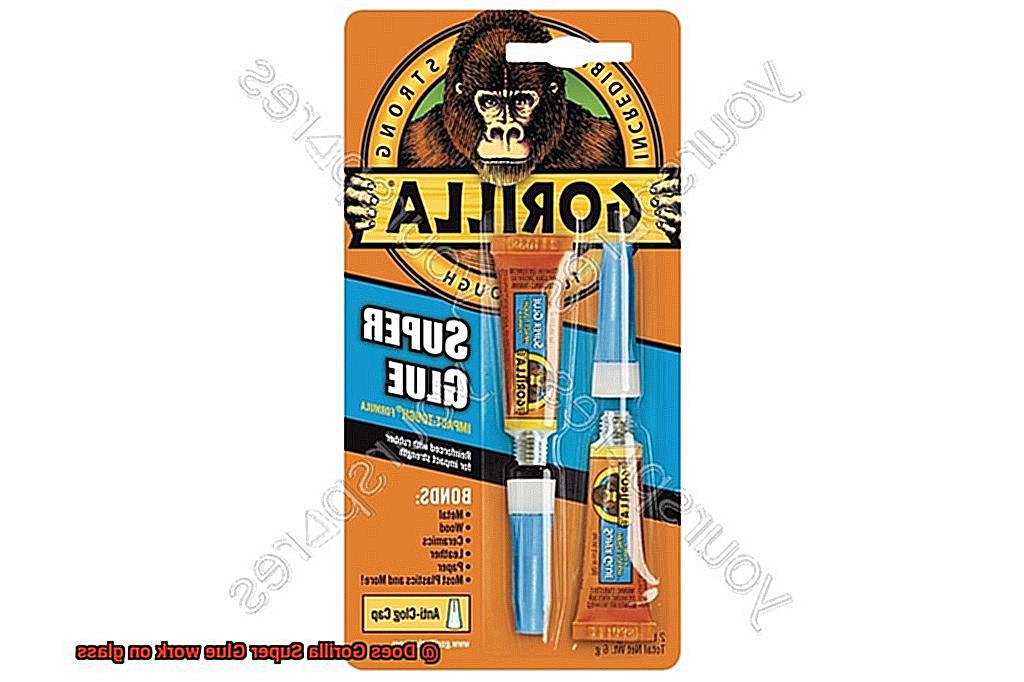
Glass objects often encounter extreme heat conditions, such as in kitchen appliances or automotive applications. Unfortunately, Gorilla Super Glue is not designed to withstand high temperatures, making it unsuitable for long-term bonding of glass objects in such environments. Heat can cause the adhesive to lose its strength, leading to bond failure.
Rigid Bonding:
Glass expands and contracts with temperature changes, so flexibility is crucial when bonding it. However, Gorilla Super Glue forms a rigid bond that lacks the necessary flexibility to accommodate these movements. As a result, stress caused by expansion and contraction can lead to cracks or breaks in the bond.
Moisture Meltdown:
Moisture is the enemy of many adhesives, including Gorilla Super Glue. When bonding glass, any presence of moisture or water can weaken the adhesive’s performance and compromise its durability. It is essential to ensure both the glass surface and the adhesive are completely dry before attempting to bond them together.
Visible Residue:
While Gorilla Super Glue dries clear, excess glue seeping out during the bonding process can leave behind visible residue or smudges on glass surfaces. This aesthetic drawback may detract from the overall appeal of your bonded glass object.
Specialized Alternatives:
To overcome these limitations, consider using adhesives specifically formulated for bonding glass surfaces. Specialized glass adhesives offer superior strength, flexibility, and long-term durability for your glass projects. These alternatives provide a more reliable solution than Gorilla Super Glue when it comes to bonding glass.
Alternatives to Using Gorilla Super Glue on Glass Surfaces
While Gorilla Super Glue may be a popular choice, it’s not always the ideal option for bonding glass surfaces. But fret not. We’ve got you covered with a range of fantastic alternatives that will deliver outstanding results.
UV-Curing Adhesive:
Enter the superheroes of the glass-bonding world – UV-curing adhesives. These remarkable adhesives are activated by ultraviolet light and create a strong, transparent bond on glass surfaces. Renowned for their precision bonding abilities, they are extensively used in industries like electronics and optics, where strength and clarity are paramount.
Silicone Adhesive:
When it comes to flexibility, moisture resistance, and high temperatures, silicone adhesives reign supreme. These adhesives form durable bonds that can withstand the expansion and contraction caused by temperature fluctuations. So, if your glass project will face extreme conditions, silicone adhesive is your go-to choice.
Epoxy Adhesive:
For projects demanding exceptional strength and durability, epoxy adhesives are the ultimate solution. This two-part adhesive consists of a resin and a hardener that must be mixed prior to application. Once cured, epoxy forms an incredibly robust bond capable of withstanding heavy loads and vibrations.
Double-Sided Adhesive Tape:
For temporary or less demanding applications, double-sided adhesive tape provides a quick and easy solution. With adhesive on both sides, these tapes create a strong bond between glass surfaces. Convenient and residue-free upon removal, they offer a hassle-free option for your projects.
bG60VfP5Z84″ >
Also Read: Can I use Gorilla Glue on glasses?
Conclusion
Gorilla Super Glue is a reliable adhesive that successfully bonds glass surfaces together.
Its strong and durable formula ensures a secure and long-lasting bond. Whether you’re fixing a broken vase or creating a stunning glass art piece, Gorilla Super Glue will get the job done.
With Gorilla Super Glue, your glass projects are in safe hands.

